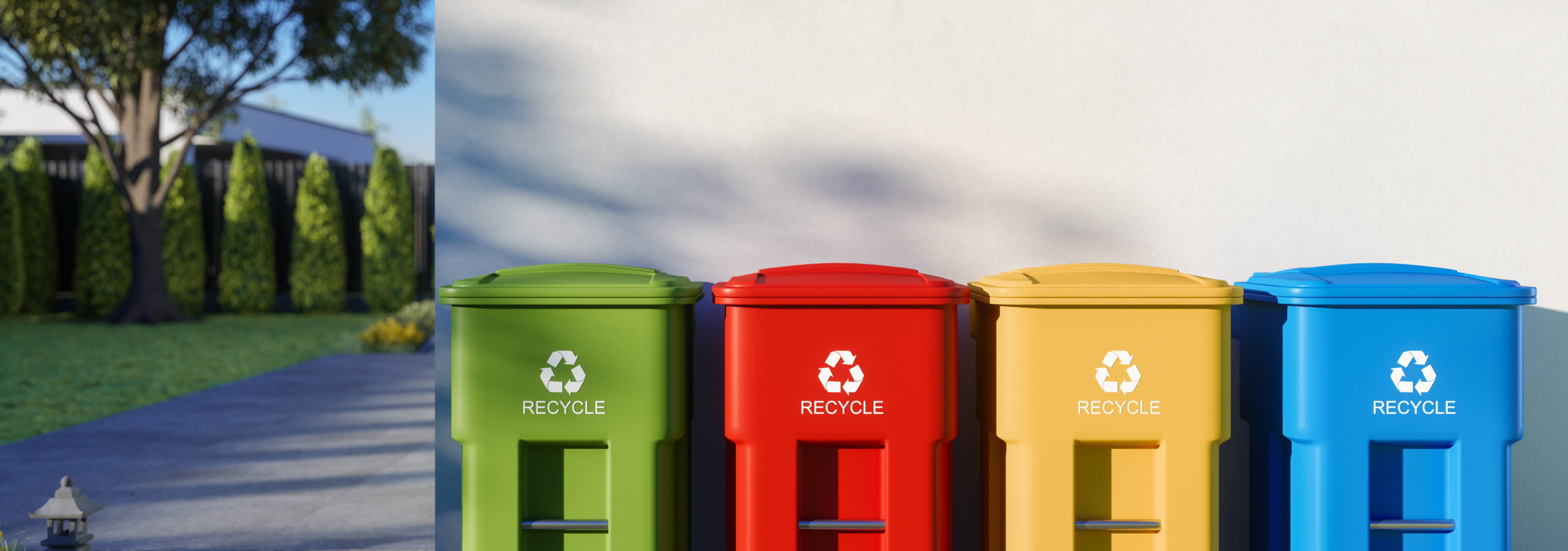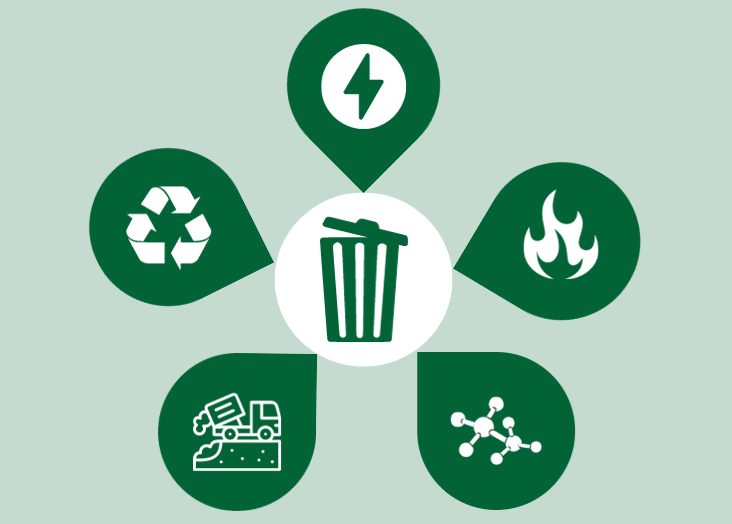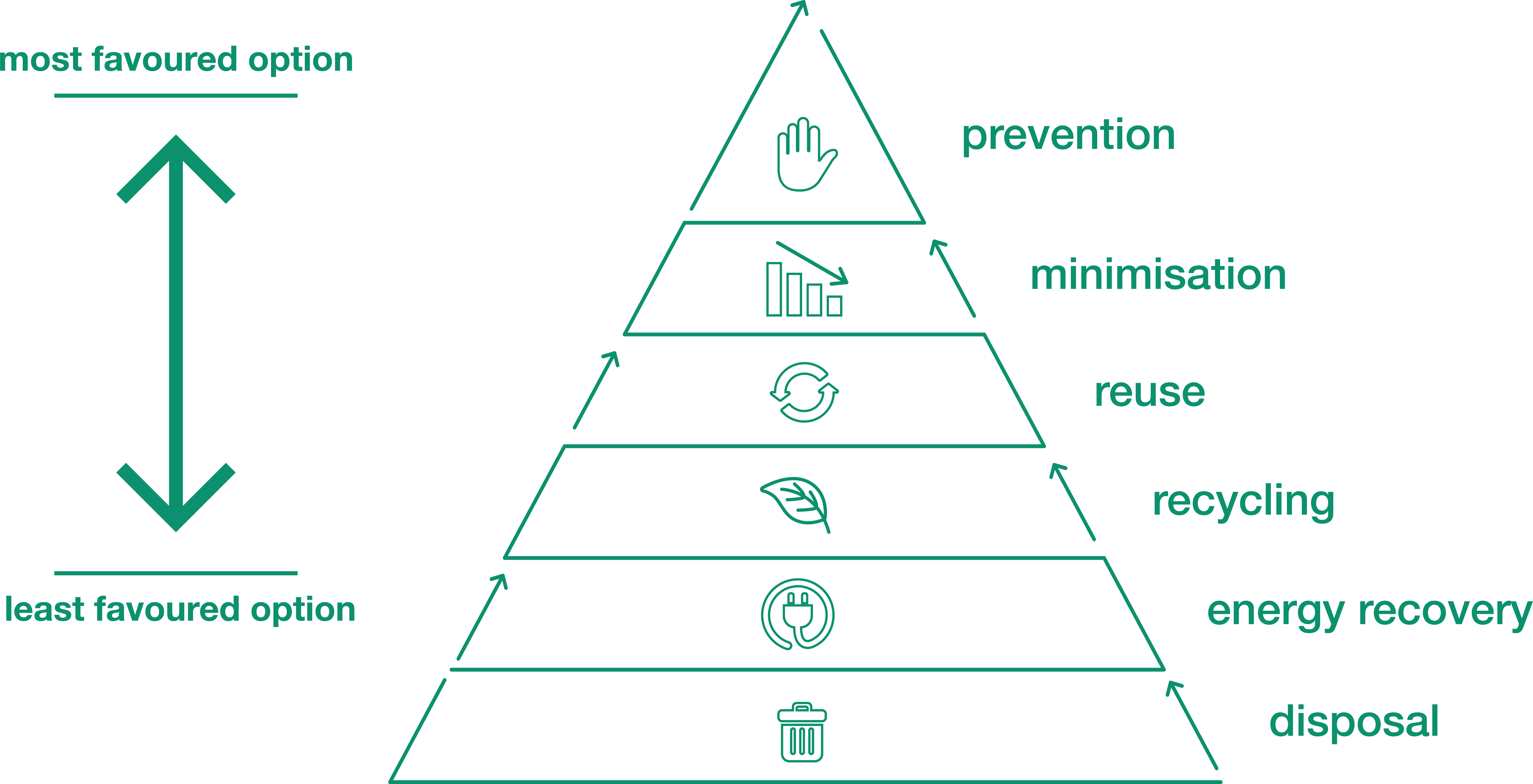Discover the Advantages of Recycling Lives Services for Your Service
Discover the Advantages of Recycling Lives Services for Your Service
Blog Article
Discovering Various Kinds Of Waste in Modern Waste Administration Equipment
The contemporary landscape of waste monitoring includes browsing a complicated selection of waste types, each requiring specialized handling and disposal approaches to reduce ecological impacts. Community strong waste, unsafe waste, digital waste, and natural waste each present unique obstacles and possibilities for resource healing.
Local Solid Waste
Municipal strong waste, often described as family trash or rubbish, includes a range of disposed of products generated by domestic, industrial, and institutional sources within a community. This waste stream normally consists of things such as product packaging, food scraps, lawn trimmings, paper, plastics, fabrics, and disposed of family products. The administration of local strong waste is an essential component of urban planning and public health, necessitating efficient collection, transport, and disposal systems.
Effective waste monitoring systems are made to lessen ecological influence while making the most of source recuperation. Composting organic waste, such as food scraps and lawn trimmings, not just decreases land fill usage but additionally creates beneficial soil changes.
Municipalities have to also attend to the logistical and economic obstacles associated with waste monitoring. Executing pay-as-you-throw systems, boosting public awareness, and buying technology can dramatically enhance waste diversion prices. By integrating these techniques, towns can cultivate lasting communities, reduce greenhouse gas emissions, and conserve all-natural resources.
Contaminated Materials

Reliable dangerous waste management includes several critical actions: identification, disposal, therapy, and partition. Recognition requires the category of waste based upon its harmful properties. Segregation makes certain that hazardous products are kept individually from non-hazardous waste to avoid cross-contamination. Treatment methods, such as chemical neutralization, incineration, and stabilization, are used to minimize the toxicity, volume, or mobility of the waste. Disposal choices, including protected garbage dumps and underground storage, are selected to ensure long-term containment.
Governing structures, such as the Resource Preservation and Recuperation Act (RCRA) in the USA, offer guidelines and criteria for harmful waste administration. Adherence to these policies, coupled with developments in waste therapy modern technologies, is essential in reducing the risks connected with contaminated materials.
Digital Waste
Digital waste, frequently described as e-waste, represents a quickly expanding difficulty in waste monitoring systems globally. This sort of waste encompasses disposed of electronic gadgets and equipment such as mobile phones, computer systems, televisions, and other electronic home appliances. The rapid speed of technical innovation, coupled with lowering product life expectancies and customer need for the newest gadgets, has actually tremendously increased the volume of e-waste produced each year.
E-waste is specifically problematic because of its intricate composition, often consisting of unsafe substances like mercury, lead, and cadmium, which posture substantial environmental and health and wellness dangers otherwise effectively managed. Conversely, e-waste also includes useful products such as copper, silver, and gold, which can be recovered and recycled. The dual nature of e-waste-- both harmful and beneficial-- requires specific handling, recycling, and disposal procedures.
Efficient e-waste monitoring involves stringent regulative structures, durable collection systems, and progressed reusing technologies. Public recognition and engagement are critical, as improper disposal techniques, such as unlawful unloading and informal recycling, worsen environmental contamination and health and wellness threats. Enhancing e-waste monitoring methods is crucial for minimizing ecological influence and recouping valuable sources in an increasingly electronic globe.

Organic Waste
Organic waste, consisting of kitchen scraps, yard trimmings, and agricultural residues, stands for a substantial section of the global waste stream. This type of waste is naturally degradable, meaning it can be broken down by bacteria into less complex natural compounds. In spite of its capacity for natural decay, incorrect administration of natural waste useful site can bring about adverse environmental impacts, including the exhaust of greenhouse gases such as methane, which add to climate change.
Effective management of organic waste is crucial for reducing these ecological influences (recycling lives services). Composting is a widely adopted technique, transforming natural waste right into nutrient-rich compost that can improve dirt health and farming performance. In addition, anaerobic food digestion is an emerging innovation that converts organic waste right useful reference into biogas, an eco-friendly energy source, and digestate, which can be made use of as plant food
Municipalities and waste administration entities should execute durable natural waste collection and treatment programs to make the most of the advantages of these processes. Public education campaigns can likewise play a crucial role in motivating homes and businesses to different natural waste from other sorts of waste. By prioritizing the monitoring of organic waste, cultures can lower garbage dump use, reduced greenhouse gas emissions, and develop useful by-products for agricultural usage.

Innovative Waste Monitoring
In the realm of waste administration, cutting-edge approaches are changing just how cultures handle their refuse, going for sustainability and performance. These developments incorporate a range of innovations and techniques that boost recycling rates, lower landfill reliance, and reduced ecological impact. One famous innovation is the application of clever waste containers geared up with sensors that keep an eye on fill degrees and maximize collection courses. This not just reduces fuel usage yet likewise lessens greenhouse gas exhausts.
Another remarkable growth is the fostering of waste-to-energy (WtE) innovations. By converting non-recyclable waste into usable power via processes such as incineration and anaerobic digestion, WtE reduces landfill concern and offers an eco-friendly energy resource. In addition, developments in chemical recycling permit for the breakdown of intricate plastics right into their original monomers, making it possible for the creation of new, premium plastic products.
Furthermore, the circular economy version is obtaining grip, stressing the style of items and systems that prioritize reusability and source effectiveness. This holistic strategy motivates sectors to lessen waste generation from the start. With these innovative methods, modern waste administration systems are not just resolving the immediate obstacles of waste disposal yet likewise leading the method for a more sustainable future.
Verdict
An extensive understanding of local strong waste, contaminated materials, digital waste, and natural waste, coupled with the application of cutting-edge waste management options, is necessary for reducing ecological impacts. Integrating modern technologies such as smart waste containers and waste-to-energy systems can improve effectiveness and sustainability. Reliable waste monitoring methods not just foster resource recuperation but also promote public understanding and engagement, ultimately adding to the advancement of a round why not check here economic situation.
The contemporary landscape of waste administration entails navigating a complex selection of waste kinds, each calling for specialized handling and disposal methods to alleviate environmental effects. Municipal solid waste, dangerous waste, electronic waste, and organic waste each present distinctive obstacles and possibilities for source healing.Digital waste, frequently referred to as e-waste, stands for a quickly expanding obstacle in waste management systems worldwide. With these ingenious techniques, contemporary waste administration systems are not just resolving the prompt obstacles of waste disposal however likewise paving the method for a much more sustainable future.
A comprehensive understanding of metropolitan strong waste, dangerous waste, digital waste, and natural waste, paired with the execution of ingenious waste management solutions, is imperative for minimizing ecological effects. (recycling lives services)
Report this page